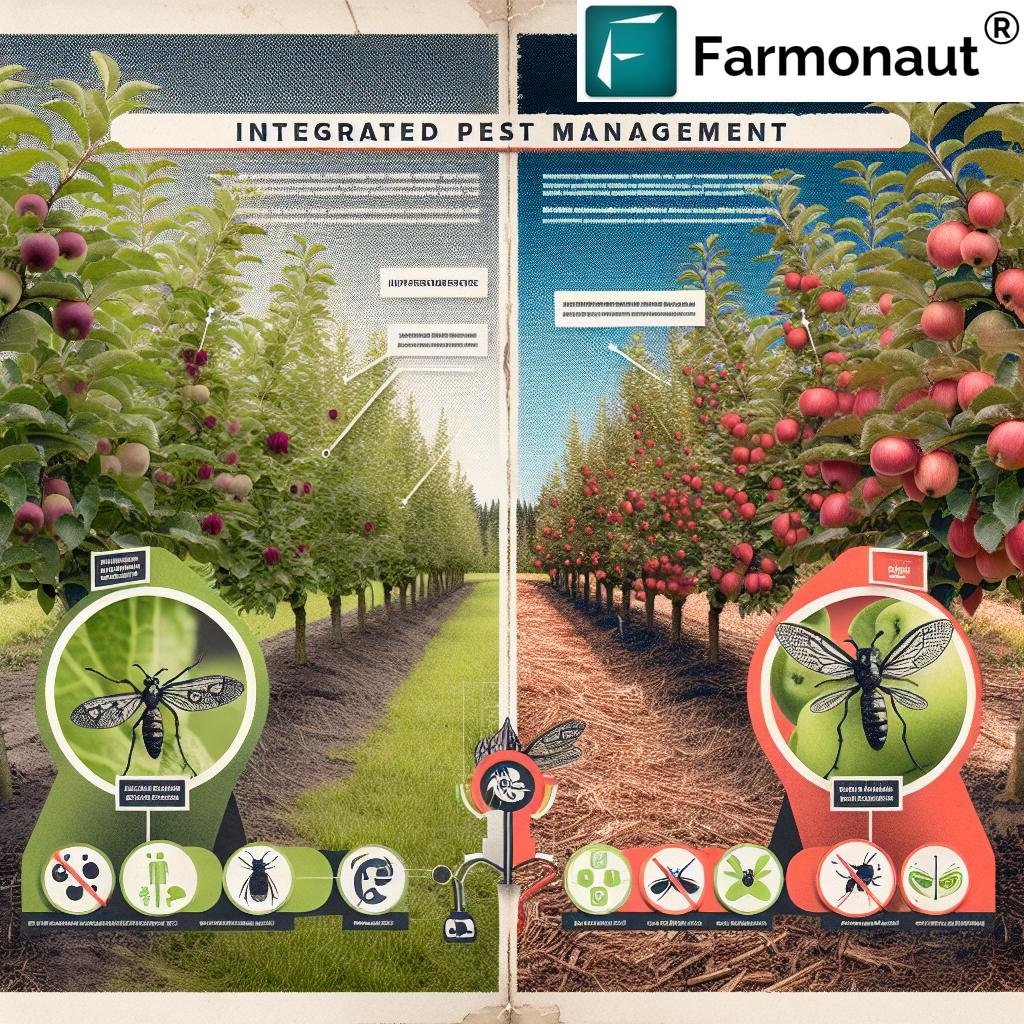New Silver-Gold Vein Discovery & Results in Yukon Gold Exploration
” In Yukon, a newly discovered silver-gold vein yielded drill results showing up to 5.2 g/t gold and 120 g/t silver. ”
Table of Contents
- Introduction: Yukon Gold Exploration Landscape
- Freegold Mountain Project: Setting the Stage
- Silver-Gold Vein Discovery: Unveiling the Proton Zone
- Rock Sampling and Geochemistry Assay Results
- Structural Control, Mapping & Exploration Correlations
- Nucleus Deposit Overview & Resource Estimates
- Drilling Results & Mineral Estimates Overview Table
- Sample Preparation and QAQC Assurance
- Exploration Potential and Future Directions
- Farmonaut: Enabling Precision and Transparency in Mining and Exploration
- Frequently Asked Questions (FAQ)
- Conclusion
Introduction: Yukon Gold Exploration Landscape
Gold exploration in Yukon has been a cornerstone of Canada’s precious metals industry, drawing attention from investors, geologists, and mining professionals worldwide. The region boasts a rich geological framework within the iconic Tintina Gold Belt, home to myriad deposits and mineralization zones. Over the past decades, innovative exploration methods, advanced drilling programs, and comprehensive geochemistry studies have fueled discoveries that elevate Yukon’s reputation as a gold and copper exploration hotspot.
In 2025, a breakthrough occurred with Triumph Gold Corp.’s announcement of a new silver-gold vein discovery within the Freegold Mountain Project. The Proton Zone, located in the Mechanic Creek area of Yukon, signifies a shift in the project’s exploration potential. This technical update offers a comprehensive overview of the new discovery, drilling significant intercepts, mineral resource estimates, copper mineralization trends, and sampling preparation (QAQC) protocols—anchoring Vancouver-based Triumph Gold Corp. as a leader in the latest industry trends and news.
Freegold Mountain Project: Setting the Stage
The Freegold Mountain Project, wholly owned by Triumph Gold Corp., spans nearly 200 square kilometres in the Dawson Range, Yukon. The project straddles an active mineral belt and covers significant strike length of the Big Creek Fault Zone, which is directly related to both epithermal gold-silver and porphyry gold-copper mineralization. Renowned for its excellent road accessibility and established infrastructure, Freegold Mountain hosts three primary NI 43-101 mineral resource deposits:
- Nucleus Deposit: A prominent epithermal gold-silver-copper resource with strong structural control and significant tonnage.
- Revenue Deposit: A porphyry gold-copper deposit structurally and geochemically akin to the famous Casino deposit, central to the Tintina Gold Belt.
- Tinta Hill Deposit: An important gold-silver-copper area contributing to the project’s overall resource base.
The project is situated on the traditional territories of the Little Salmon Carmacks First Nation and Selkirk First Nation, establishing a precedent for responsible, community-inclusive exploration.
Silver-Gold Vein Discovery: Unveiling the Proton Zone
The spotlight of this update is the Proton Zone—a newly discovered silver-gold vein system located roughly 1.3 km northeast of the Nucleus Deposit and 2.75 km northwest of the Revenue Deposit at Mechanic Creek. This area had previously been unexplored, and the discovery resulted directly from fresh bedrock exposure due to placer mining.
Initial mapping revealed an approximately 15 x 15 metre mineralized zone—with shear-hosted, quartz-sulfide veins bearing a strong geochemical signature akin to the Nucleus deposit, but geologically hosted in granodiorite similar to the Revenue deposit. What is striking is the Proton Zone’s location in relation to previously sampled or drilled zones—over 300 metres from the nearest exploration disturbance, rendering it a definitive discovery.
- Key Highlight: Rock sampling results from the Proton Zone documented high grades of both gold (Au) and silver (Ag), coupled with notable As, Sb, Bi and Cu presence, reflecting considerable mineralization potential.
This silver gold vein discovery at Mechanic Creek is complemented by multiple sampled zones along the same structure line:
- Drone Zone: 1.3 km to the south, sampled up to 450 g/t gold and 19 g/t silver (2019).
- Southern Zones: Within 600 metres, returned up to 6.58 g/t Au and 13.6 g/t Ag—all suggesting an underexplored, dynamically mineralized system linking Proton and Revenue deposits.
Structurally, these zones are part of a broader, fault-controlled mineralized corridor, offering new vectors for future drilling programs and expanding the parameters for a revised mineral resource estimate.
Rock Sampling and Geochemistry Assay Results from Proton Zone
Focus: Gold Exploration Yukon & Assay Geochemistry Insights
The success of gold exploration in Yukon often depends on rigorous, field-based rock sampling and state-of-the-art assay techniques. Our recent sampling campaign at the Proton Zone entailed systematic collection and analysis across key mineralized structures.
Below are the highlights from Table 1: Assay Results, capturing gold (Au) and silver (Ag) grades, as well as essential pathfinder elements such as copper (Cu), arsenic (As), antimony (Sb), and bismuth (Bi), recorded in ppm (parts per million):
- Sample C959830: Grab sample with 1.68 g/t Au, 8.99 g/t Ag, >10,000 ppm As, 212 ppm Cu
- Sample C959831: 30-cm chip sample at 5.95 g/t Au, 7.17 g/t Ag, >10,000 ppm As, 161 ppm Cu
- Sample C959829: Silicified vein-breccia, 0.5 g/t Au, 1.26 g/t Ag, 1,539 ppm Cu, 9,030 ppm As
Notably, the geochemistry confirms the arsenic-antimony-bismuth association typical of gold-silver-copper epithermal mineralization and porphyry influences—key for further exploration within the Dawson mineral belt.
” Recent Yukon exploration revealed copper mineralization with grades reaching 0.45% Cu, enhancing the project’s overall mineral resource estimate. ”
Geochemistry and Field Observations
- C959829: Silicified vein-breccia, up to 10% arsenopyrite
- C959830: Similar structure, 10 m along strike, high Au and Ag values
- C959831: Clay-altered, gossanous, east trend, no visible sulphides—still elevated Au and Ag
These comparative sample types and their related geochemistry suggest a complex, multi-phase mineral deposition history, opening the door for a precision-focused drilling program and refined geological modeling.
Structural Control, Mapping & Exploration Correlations
The Big Creek Fault Zone plays a pivotal role in controlling gold, silver, and copper mineralization within the Freegold Mountain region. Both the Nucleus and Revenue deposits, as well as the newly defined Proton Zone, are located within or immediately adjacent to significant fault structures.
- Proton Zone lies over 1 km northeast of the Nucleus main pit and 2.75 km northwest of Revenue deposit—an underexplored corridor.
- Continuity in geochemical signatures (gold-copper-arsenic-antimony-bismuth) across zones hints at a possible genetic link to the larger porphyry mineralizing event at Revenue.
- All mineralized zones mapped to date remain largely untested by systematic drilling, with surface sampling guiding upcoming drill programs.
Furthermore, high-resolution mapping and geochemical surveys (including silt, soil, and rock samples) have identified multiple discontinuous yet parallel structures—each offering potential for discovery of additional mineralized zones within the defined fault corridor.
Nucleus Deposit Overview & Mineral Resource Estimate
Epithermal Gold-Silver-Copper Resource & 2020 Estimate
The Nucleus deposit stands as one of Yukon’s most significant epithermal mineralization zones, hosting gold-silver-copper mineralization within a complex lithological setting of Paleozoic schists and gneisses, penetrated by quartz-feldspar porphyry dykes and leucogranite stocks. Structural control is imparted by the Big Creek Fault System, critical for both resource delineation and modeling.
- Indicated Resource (2020): 31 million tonnes grading 0.65 g/t gold, 0.07% copper, 0.7 g/t silver
- Inferred Resource: 9.4 million tonnes at 0.56 g/t gold, 0.04% copper, 0.7 g/t silver
With gold and silver prices on the rise, the Nucleus resource demonstrates robust upside and capacity for expansion—underscored by extension of mineralization below the current $1,500/oz gold pit boundary. Completion of future drilling along the main and northern satellite pit resource, and along high-potential structural intersections, will be fundamental for achieving a revised mineral resource estimate.
For professionals following industry trends & news in the Yukon, these indicated and inferred grades, combined with recent geochemistry and drilling results, set the stage for continued growth and economic attractiveness of the Freegold Mountain Project.
Drilling Results & Mineral Estimates Overview
A technical summary is provided below—highlighting key intercepts, sample grades, and estimated resources from the 2021 drilling program in relation to both the Nucleus deposit and the wider Proton/Mechanic Creek areas.
| Drill Hole ID | Location/Coordinates (NAD83-8N) | Depth (m) | Gold Grade (g/t) | Silver Grade (g/t) | Copper Grade (%) | Estimated Resources (koz/t) |
|---|---|---|---|---|---|---|
| N21-01 | E: 379458, N: 6913364 | 235 | 0.45 | 1.39 | 0.07 | Indicated: 31,000 |
| N21-02 | E: 379120, N: 6913528 | 449.5 | 1.26 | 0.71 | 0.02 | Inferred: 9,400 |
| N21-03 | E: 379162, N: 6913073 | 320.4 | 0.55 | 0.54 | 0.04 | Composite: 7,500 |
| C959830 (Proton Zone – Sample) | E: 380508, N: 6914767 | N/A | 1.68 | 8.99 | 0.02 | Exploration Target |
| C959831 (Proton Zone – Chip) | E: 380515, N: 6914772 | N/A | 5.95 | 7.17 | 0.016 | New Discovery |
These results not only underscore the project’s significant exploration potential, but also emphasize the value of ongoing, systematic drilling and assay campaigns within defined structural and geochemical corridors.
Sample Preparation and QAQC Assurance
Ensuring the accuracy and reliability of geochemistry assay results is critical. Our sample preparation and QAQC (Quality Assurance/Quality Control) protocols conform to National Instrument 43-101 and industry best practices:
- Sample Preparation:
- Rock samples are weighed, dried, and crushed to 70% passing 2 millimetres.
- A 250-gram riffle-split is pulverized to >85% passing 75 microns (PREP-31).
- Sample pulps are shipped directly to ALS Vancouver for 48-element multi-element analysis using 4-acid near-total digestion, ICP-MS, and atomic absorption spectroscopy for gold.
- Diamond drill core:
- HTW (70.92mm) and NTW (56.00mm) sizes, sampled at ALS Whitehorse and pulps shipped to Vancouver.
- 50-gram pulps analyzed by fire assay (0.005–10 ppm gold detection, Au-AA24) and gravimetric finish if over-limit.
- QAQC Measures:
- Certified reference materials, rock blanks, and field duplicates comprise 5% of all samples in every assay batch.
- Ongoing QAQC checks ensure compliance and support technical due diligence, underpinning every mineral resource estimate and technical program.
Trustworthy assay data forms the backbone of credible drilling significant intercepts and resource evaluations, underscoring transparency in technical news releases and resource reports out of Vancouver, British Columbia.
Exploration Potential and Future Directions
Growth Prospects in the Yukon & Trends in Porphyry Gold Copper Deposit Exploration
Multiple factors point to a transformative future for gold exploration Yukon:
- Emergence of New Mineralized Zones:
- Proton Zone and nearby high-grade samples present new targets along previously unexplored structure lines, expanding both lateral and vertical resource envelopes.
- Potential for additional copper mineralization, as validated by significant copper assays (>0.45% Cu) in both historical and new samples.
- Geological Continuity:
- Shared geochemistry signatures suggest a genetic relationship between Proton, Nucleus, and Revenue—necessitating an expanded, multidisciplinary technical approach.
- Resource Upside:
- Current mineral resource estimates (both indicated and inferred) position Freegold Mountain Project for major growth—supported by a robust technical team and advanced data protocols.
- Sustainable and Responsible Mining:
- Respect for the environmental, community, and First Nations considerations remain central in all exploration and drilling programs.
From a technical and economic standpoint, the Freegold Mountain Project continues to chart upward—boosted by new silver gold vein discoveries, copper-rich intercepts, and a proven record of systematic drilling and assay-based validation.
Farmonaut: Enabling Precision and Transparency in Mining and Exploration
While Triumph Gold Corp. excels in advanced mineral exploration, modern ventures across mining and agriculture often seek robust digital and data-driven tools to enhance their operations. Farmonaut stands at the forefront of this agritech transformation—providing scalable, satellite-based solutions for precision resource management, crop monitoring, and operational transparency.
- Real-Time Crop and Resource Monitoring: Farmonaut leverages multispectral satellite imagery and advanced AI advisory systems for crop health monitoring and resource optimization. Such systems can inspire new paradigms for real-time, data-driven monitoring in both agriculture and mineral exploration.
- Blockchain-Based Traceability: With increasing demand for transparency, Farmonaut’s product traceability solution integrates blockchain to track goods and resource management from origin to final use—enhancing trust in supply and value chains across industries.
- API Integration for Data-Driven Insights: Industries seeking to harness powerful, scalable analytics can seamlessly access Farmonaut’s satellite and weather data through the satellite API, and developers can explore further with API developer docs.
- Fleet & Large Scale Management: For large-scale agribusinesses and operations, Farmonaut’s fleet management and large scale farm management tools optimize efficiency, safety, and transparency across diverse landscapes.
- Environmental Sustainability: Farmonaut’s carbon footprinting tracks and reduces emissions, aligning mineral and agricultural operations with environmental compliance and modern ESG goals.
Frequently Asked Questions (FAQ)
Q1: What makes the Proton Zone discovery significant for Yukon gold exploration?
The Proton Zone marks the discovery of high-grade silver-gold vein mineralization within previously unexplored bedrock over 1 km from historic drilling. Its strong geochemical similarity to major deposits, plus the presence of copper, arsenic, and antimony, establishes a new exploration target that could significantly expand the project’s mineral resource estimate.
Q2: How does copper mineralization impact the economic value of the Freegold Mountain Project?
Copper mineralization, with grades reaching up to 0.45% Cu in some intercepts, provides important co-product value alongside gold and silver. This enhances both the project’s overall economics and technical attractiveness in a market that values diversified precious- and base-metal assets.
Q3: What are the main QAQC steps in sample preparation and assay testing?
Rigorous QAQC protocols involve repeated use of certified reference materials, blanks, and field duplicates in every sample sequence. Samples are weighed, dried, crushed, pulverized, shipped as pulps for laboratory analysis using fire assay (for gold) and ICP-MS (for multi-element analysis), ensuring accurate and reliable data for resource estimation.
Q4: How does Farmonaut facilitate precision and transparency in resource-based industries?
Farmonaut’s data-driven platform combines real-time satellite monitoring, AI-based analytics, and blockchain traceability to optimize resource management, ensure supply chain transparency, and support compliance. Industries benefit from reliable, accessible insights delivered via the web, mobile apps, and API integrations.
Q5: Where can I access more details about Farmonaut’s traceability and large-scale resource management solutions?
For detailed information about product traceability, visit the traceability product page. To learn more about solutions for large agribusinesses or resource management at scale, see Farmonaut’s Agro-Admin platform.
Q6: Are all sampling and resource reports compliant with international standards?
Yes. All technical content, sampling, and analytical reports are reviewed, verified, and approved by a “Qualified Person” as per National Instrument 43-101 standards for mineral projects.
Conclusion: Shaping the Future of Gold Exploration in Yukon
The Freegold Mountain Project’s new silver-gold vein discovery in the Proton Zone is a testament to the ongoing resurgence of gold exploration Yukon. It highlights the transformative role of disciplined sampling, technical innovation, and strategic drilling in enhancing resource definition and project value. With promising mineralization patterns, highly anomalous assay results, and a commitment to best-practice QAQC, Triumph Gold Corp. remains a pioneer in this industry, advancing not only its own asset base but also setting new benchmarks for mineral exploration across British Columbia and Yukon.
Meanwhile, as the resource landscape evolves, digital management and traceability platforms like Farmonaut are shaping the next chapter in both agriculture and resource-based sectors by adding layers of efficiency, sustainability, and transparency.
Stay updated with the latest industry trends, resource estimates, and exploration breakthroughs for actionable, authoritative insights on the ever-changing mineral landscape of Yukon and beyond.


















